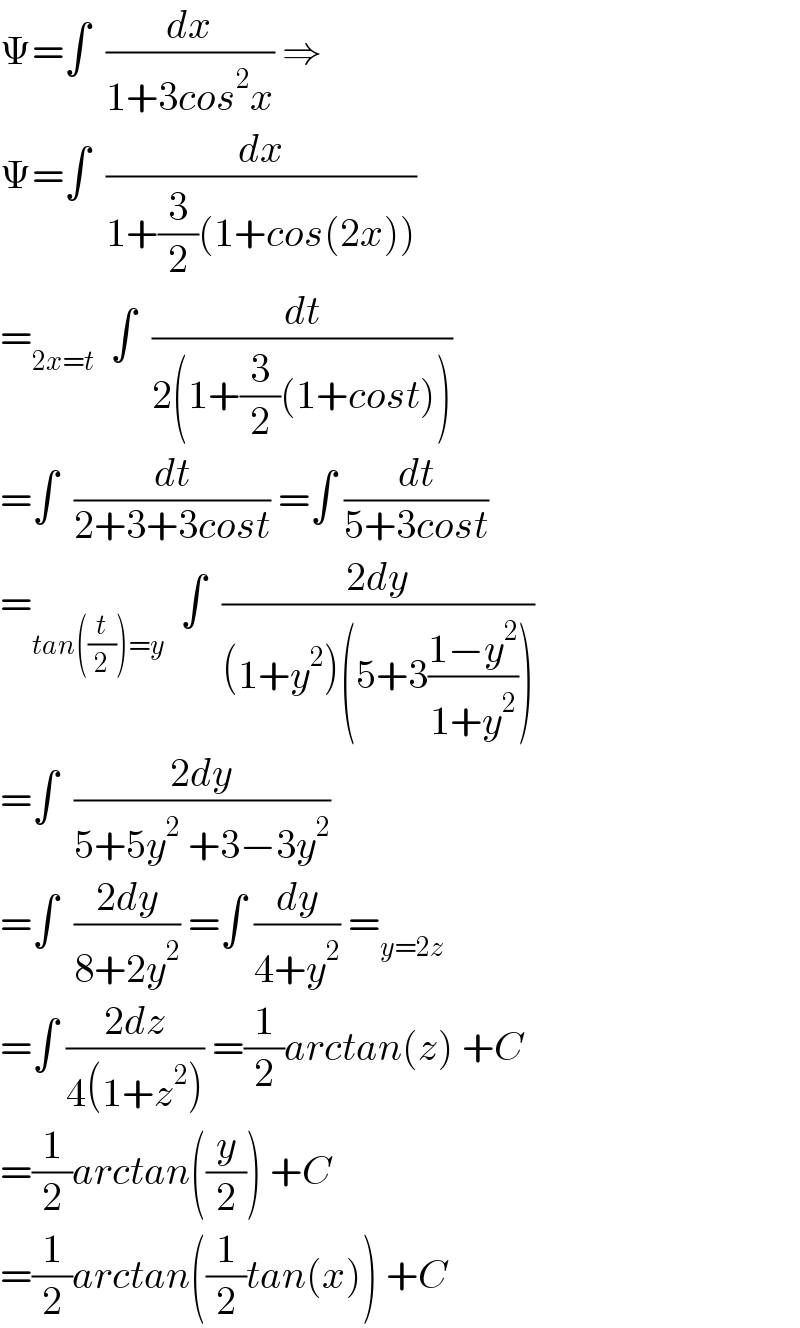
Question and Answers Forum
Question Number 141533 by sarkor last updated on 20/May/21

Answered by qaz last updated on 20/May/21

Commented by Mathspace last updated on 20/May/21

| ||
Question and Answers Forum | ||
Question Number 141533 by sarkor last updated on 20/May/21 | ||
 | ||
Answered by qaz last updated on 20/May/21 | ||
 | ||
| ||
Commented by Mathspace last updated on 20/May/21 | ||
 | ||